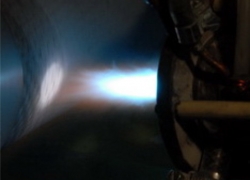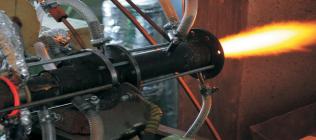The whole world, including Lithuania, has accumulated large quantities of various harmful organic materials and waste: unusable pesticides, outdated pharmaceuticals, chemical products, etc. Many of these materials contain Cl, F, P, and Hg combinations, gradually decomposing themselves and forming new harmful compounds.
Of the various existing hazardous substance and waste neutralization methods currently used in the world, the most widely used and most efficient (efficiency of 99%) thermal method is the plasma method. This method is considered to be the future technology for harmful materials processing.
Plasma waste and hazardous material neutralization facilities exist in the US, France, Switzerland, and Russia. However, there is almost no scientific data in the world’s scientific and technical literature on this hard plasma decomposable waste decomposition method, which, due to unique capabilities, could be widely applied in practice.
At present, an experimental device (plasma-chemical reactor) has been created at the Lithuanian Energy Institute Laboratory of Plasma Processing, which helps to ascertain the chemical and physical processes leading to the neutralization progress of sewage sludge and its efficiency. Successful realization of the set objectives for investigations would represent a major step towards more effective and much faster organic waste neutralization.
In order to completely break down harmful substances, the reaction temperature must be raised to 1800° C and maintained in the combustion zone for 1-2 seconds. Such conditions can only be achieved in the plasma reactor, into which various gases (air, water vapour, hydrogen) flow when heated in the plasma generator to 3000° K and more. During this process, the treated waste molecules are decomposed into atoms, radicals, electrons, and positive ions. While the plasma cools simple, nontoxic substances are formed, such as coal, steam, etc.
In the process solid waste in the reactor is melted down, and because of the very high process temperature all dangerous products are broken down, inorganic materials and metal components are fused into glassy slag, and the organic matter is converted into gas. Additionally, complete degradation of organic materials can be achieved in the reactor chamber by providing oxygen, propane, hydrogen, or other required gas. Very high decontamination efficiency is achieved this way, absolutely harmless to all organic and inorganic substances.







